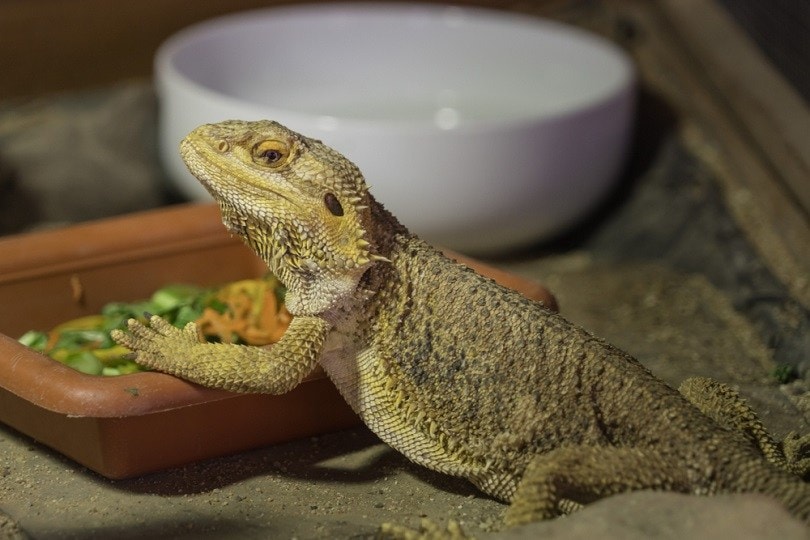How Long Can a Bearded Dragon Go Without Heat? Facts & FAQ

Updated on
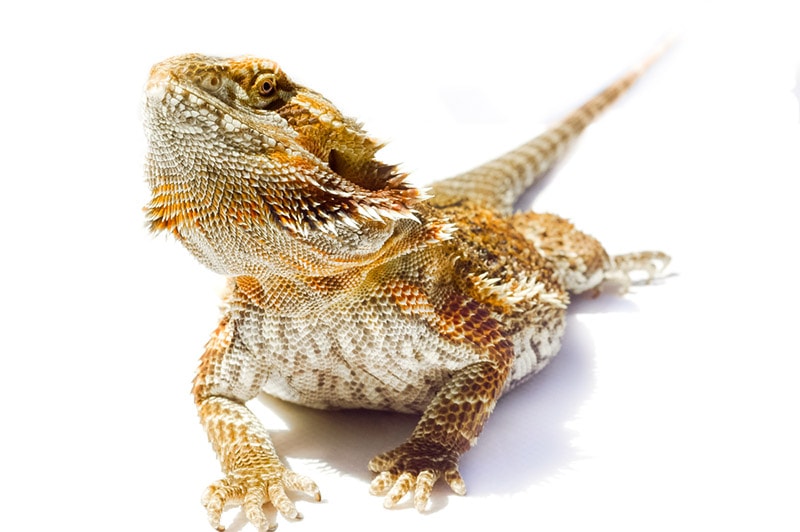
Click to Skip Ahead
Bearded Dragons come from arid areas of Australia where they are used to living with high temperatures. While all pet Bearded Dragons are captive-bred, with the capture and export of Bearded Dragons from Australia having been illegal for several decades, these cold-blooded animals have retained their need for high temperatures and warm conditions.
Ensuring that Bearded Dragons are provided with suitable temperatures is one of the more important elements of owning these lizards because without adequate heat, they can go into brumation, and they may also suffer serious illness and health problems. Generally, a Bearded Dragon can go up to 24 hours without heat, but you should never leave your Beardie this long intentionally.
They are Cold-Blooded Animals
Poikilotherms, or cold-blooded animals, are unable to generate body warmth themselves. Virtually all reptiles are cold-blooded and because, unlike mammals including humans, they are unable to generate their own body heat, they must regulate their temperature using the environment.
While this sounds unusual to us, cold-bloodedness is more common and the only species that generate their own body heat are mammals and birds. Being cold-blooded means that animals like Bearded Dragons are much more susceptible to changes in ambient temperature.
Required Temperatures
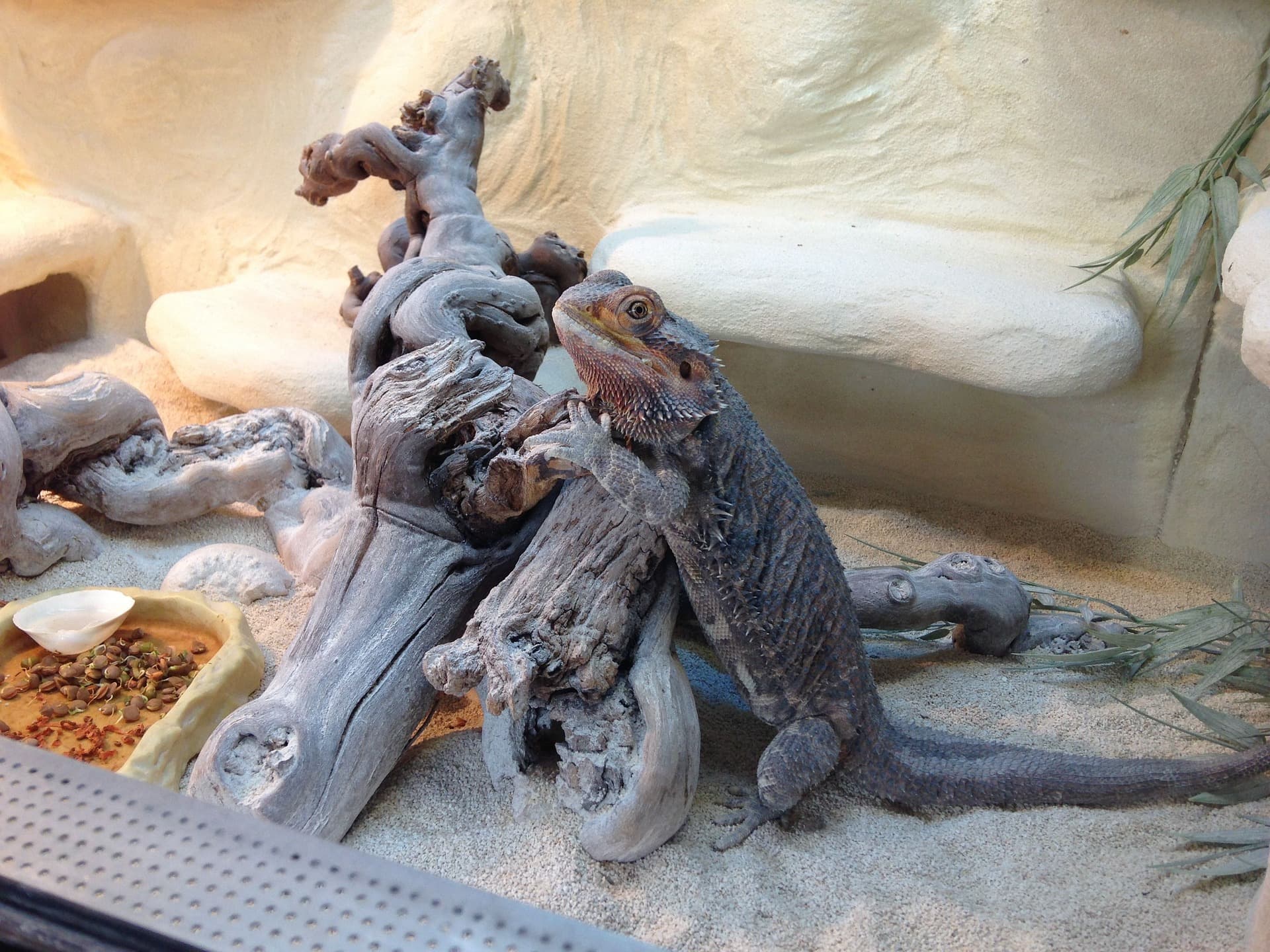
To enable Bearded Dragons to regulate their body temperature, it is necessary to provide a range of temperatures within their enclosure. Most owners have a temperature that rises from a cooler end to a hot end, with a basking lamp somewhere in the hot end to provide intense heat levels when really needed.
The cooler end of the enclosure should be around 77° or 78° Fahrenheit while the hot side needs to be 104° to 105°. Their natural environment is also very humid, and humidity level is as important to Bearded Dragons. Ensure the enclosure has humidity between 30% and 40%. The very lowest temperature a Bearded Dragon can survive at is 65° Fahrenheit but even this would be considered too low a temperature for your pet Beardie.
The 4 Steps to Take to Protect Your Bearded Dragon
Whether it is because of a blown lamp when stores are closed or a prolonged power cut, there may be times when lower temperatures are unavoidable. In these cases, you need to take action quickly to protect your Bearded Dragon.
1. Cover the Enclosure
We generally have to provide heating in a Bearded Dragon enclosure because the temperature of the room that houses the enclosure is lower than the Bearded Dragon needs. If there is no heating or inadequate heating within the enclosure, it will lose what warmth there is to the room. No matter how efficiently you cover the enclosure, some heat will escape, but by covering it with a blanket or blankets, it is possible to slow the heat loss down.
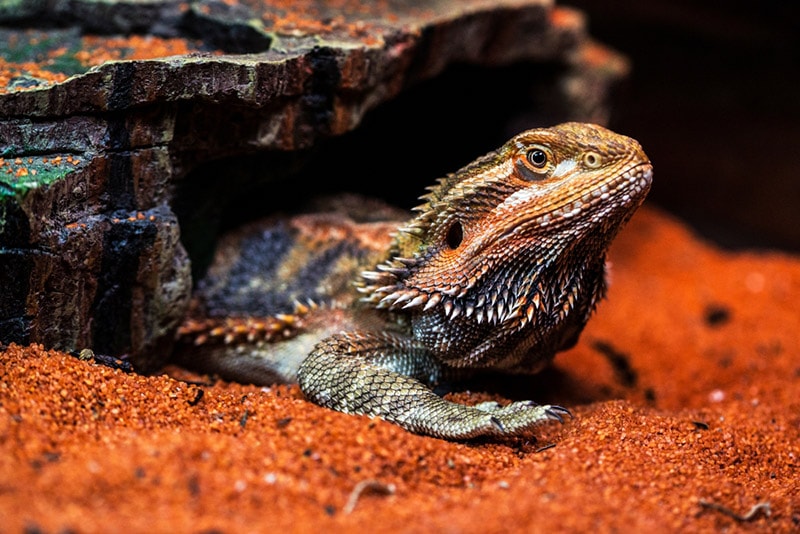
2. Warm the Room
Warming the room itself will also help slow the heat loss. Although you obviously can’t heat your room to 100°F, the closer the ambient room temperature is to the temperature of the tank, the less internal heat will be lost. Obviously, if you’re suffering a power cut and have no access to electricity or other forms of heater, this won’t be possible.
3. Hot Water Bottles and Heat Packs
Generally, you are not advised to use heat packs and hot water bottles with Bearded Dragons, but if the temperature in their enclosure is getting dangerously low, it is better than doing nothing. Make sure the heat pack is safe and will not be easily torn. Place the heat pack or hot water bottle in the enclosure in a spot the Bearded Dragon won’t be able to reach.
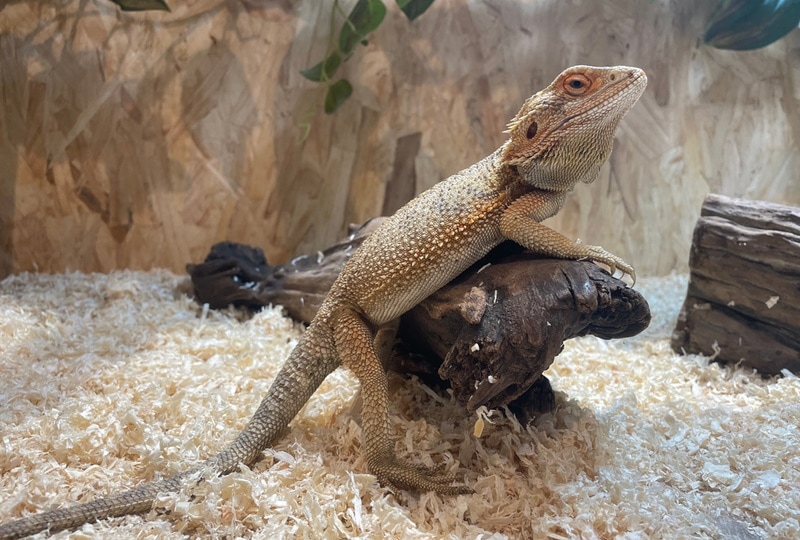
4. Warm Blankets
You can warm blankets up and then use these to wrap your Bearded Dragon up. Once you’ve done this, you can hold them against your body to retain heat within the blanket and help keep your Beardie warm.
How To Prevent Low Temperatures
Hopefully, you will never be caught in a prolonged power cut or unable to buy a replacement heat bulb, but emergencies aren’t always the cause of low temperatures. To prevent potentially dangerous low temperatures, consider the following:
1. Check Equipment
Check everything from the UVB lamp to the basking lamp and heat lamps are working properly. You should have at least one thermometer in the enclosure, and ideally two, and while it is rare, these might be giving false readings. Use an additional thermometer to check temperatures throughout the whole enclosure and make sure they meet the required temperatures.
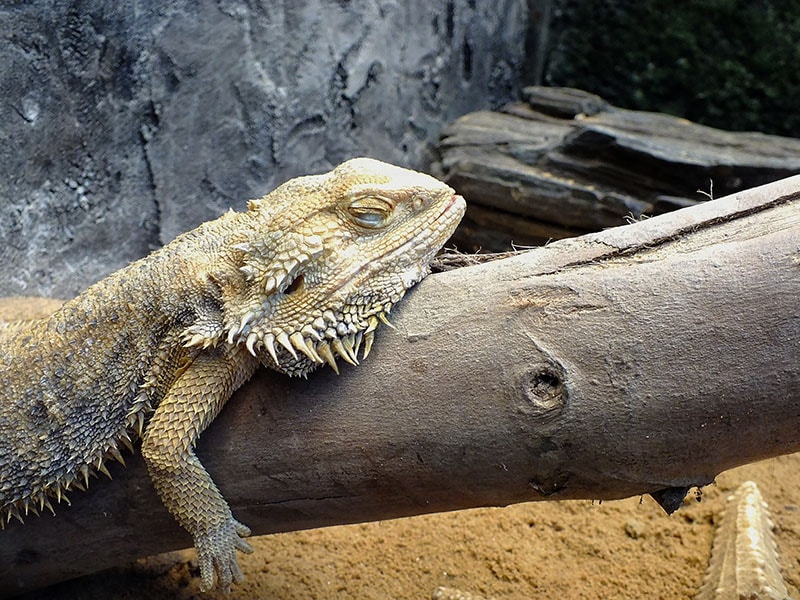
2. Install a Timer
Typically, heaters and lights get turned off at night and back on again in the morning. Doing this manually requires that you remember to do it every single time and that you flick the switch at roughly the same time every day. Instead, upgrade to a system with an electronic, automatic timer. You won’t have to remember to turn the heating on and it will keep times constant.
3. Have a Backup
If a bulb goes or the fuse for your basking lamp blows and there are no local stores that stock the items, you will have to wait for a delivery and if the wait is too long, it could cause serious problems for your Bearded Dragon. Always ensure you have additional backup supplies ready and consider ordering emergency supplies that can be used in the event of a power cut.
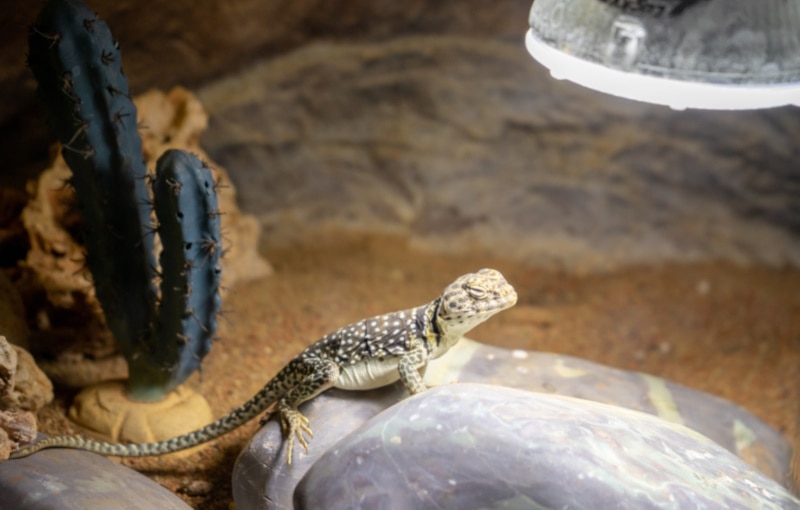
Conclusion
Bearded Dragons need a constant and consistent supply of heat because they are cold-blooded animals that are unable to generate body warmth naturally. This is usually achieved through the use of heaters and heat lamps, and you will also need to install UVB lights that also help add radiant heat.
Install at least two thermometers in the enclosure so you can monitor the temperature at both ends and make sure they remain within a safe range. A Bearded Dragon can go without warmth for up to 24 hours in an emergency, but if you are prepared, the chances of this happening are much lower.
Featured Image Credit: valleyboi63, Shutterstock

